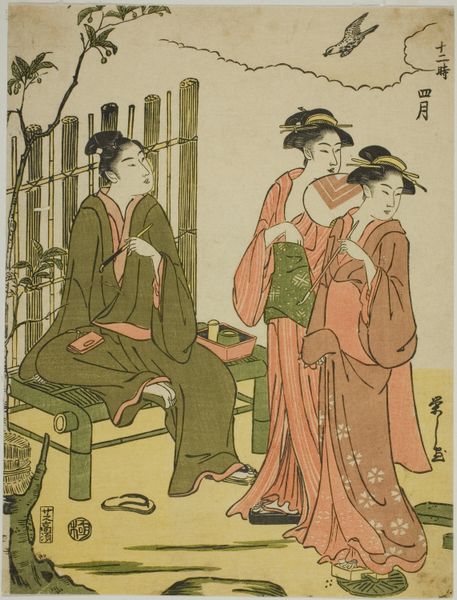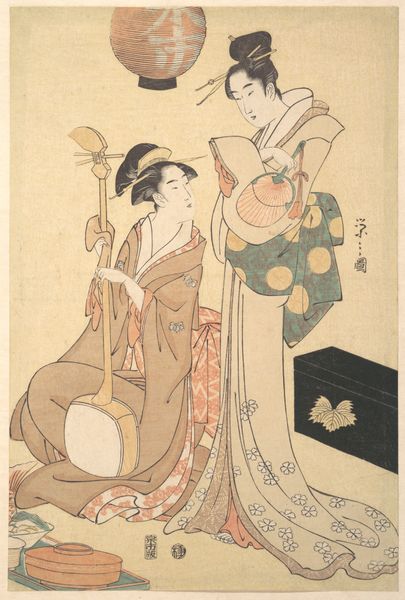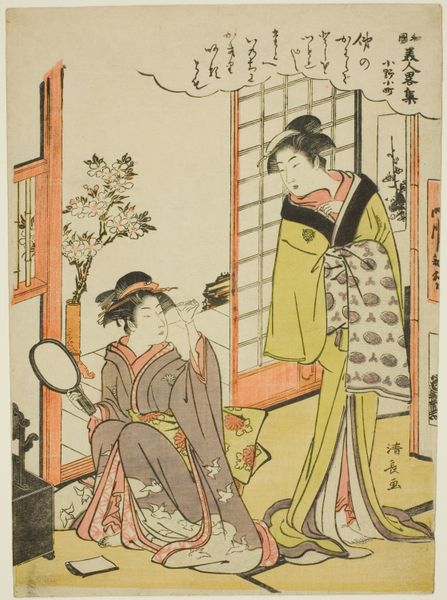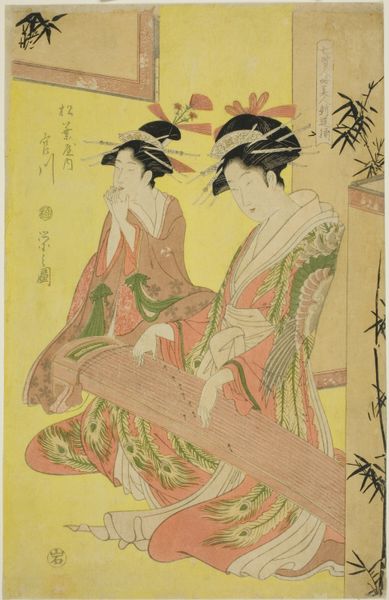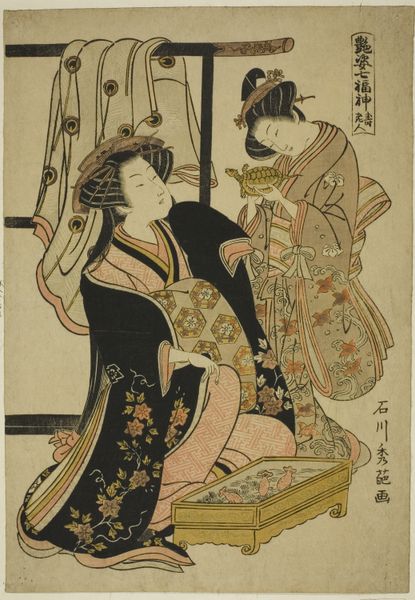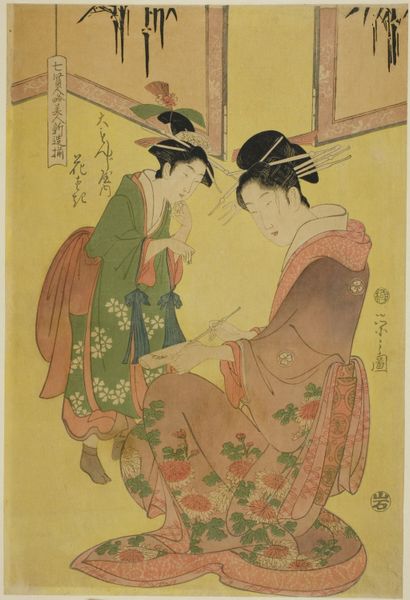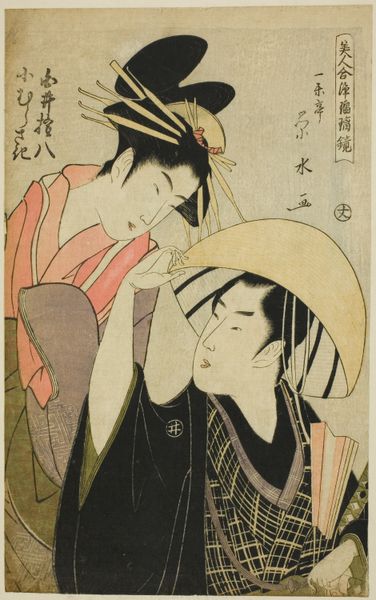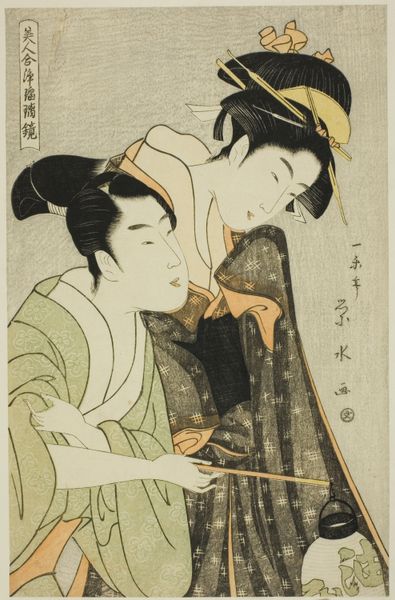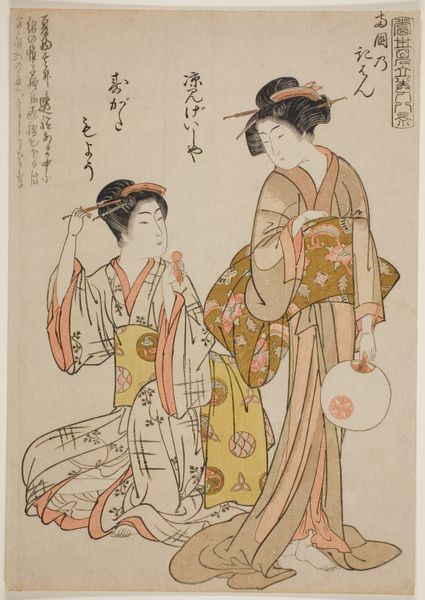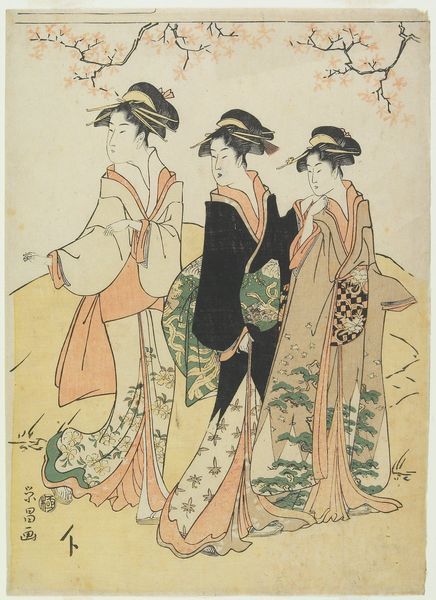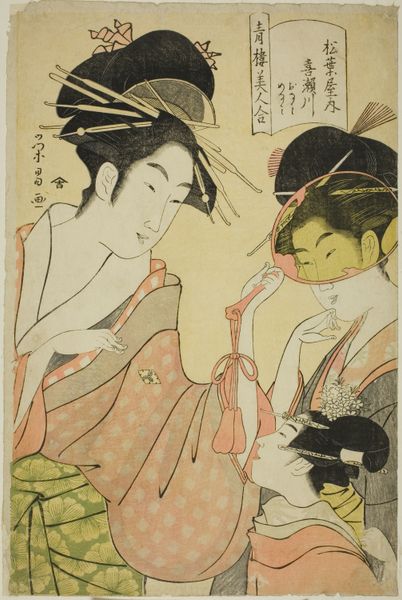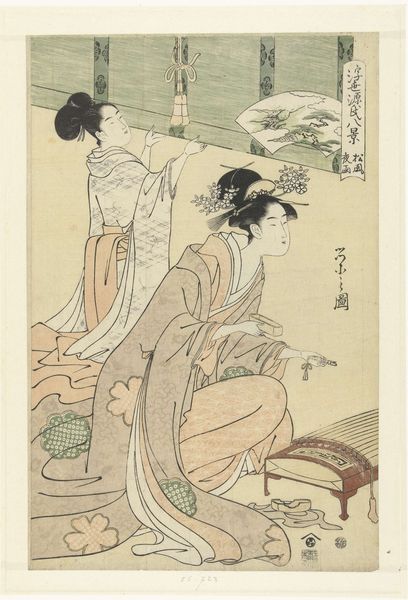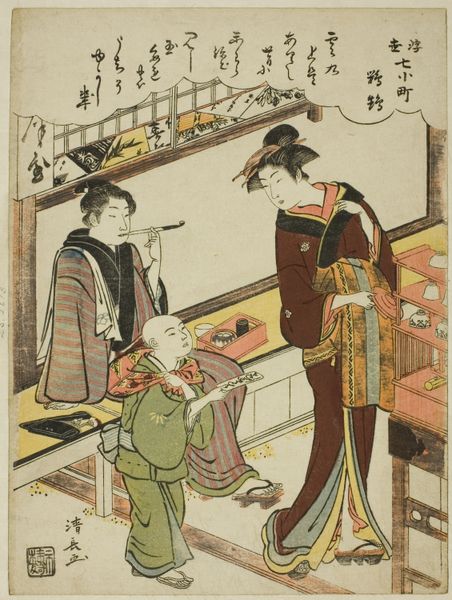
Ukiyo Genji hakkei : Suzumushi no bansho n.d.
0:00
0:00
print, woodblock-print
#
portrait
#
water colours
# print
#
asian-art
#
ukiyo-e
#
figuration
#
woodblock-print
#
genre-painting
Dimensions: 36.9 × 24.6 cm
Copyright: Public Domain
Curator: What a subtly melancholic mood this artwork evokes. Editor: It does have a contemplative air about it. We're looking at "Ukiyo Genji hakkei: Suzumushi no bansho," a woodblock print by Chobunsai Eishi. It currently resides here at the Art Institute of Chicago. Curator: Ukiyo-e prints always fascinate me. It's the deliberate crafting of each color layer, the meticulous registration, that breathes life into scenes like this. Consider the washi paper, sourced perhaps from specific regions known for its quality. Editor: Right, and situated in its time, it speaks volumes about gender and representation in the floating world, the lives of women then. What strikes me is the way these two figures are framed within the domestic space, yet the gaze directs outward, maybe longing, maybe anticipation of something more. Curator: The layering of pattern and texture contributes to this dynamic— the chrysanthemum motif, the woven textures suggested in the blind. Do you notice how the color palette relies so heavily on these earth tones? They achieve a harmonious contrast with that touch of celadon green, creating balance. It shows Eishi's astute command of material properties, wouldn't you say? Editor: Absolutely. Beyond its aesthetic appeal, it's important to examine how such artworks might reinforce or subvert contemporary social norms, especially considering the lives and agency of the women depicted. Are we simply gazing upon idealised images, or is there space for resistance? The print gives a hint of leisure or entrapment that has so much cultural association. Curator: Indeed. And, we have to recognize the skill of the artisans who realized Eishi’s vision through carving and printing, their own labor, the economy surrounding the prints, from creation to consumption. These were commodities produced within a complex system. Editor: Precisely, it reminds us that what we perceive is both an artistic choice and the product of many unseen hands operating within a stratified society. A perfect synthesis of artistry, materiality, and historical significance. Curator: Well said, I find I leave with renewed respect for those early printers as skilled interpreters, craftspeople in their own right. Editor: Yes, situating beauty and considering it with critical interrogation gives depth to experience and greater historical and social insight.
Comments
No comments
Be the first to comment and join the conversation on the ultimate creative platform.
